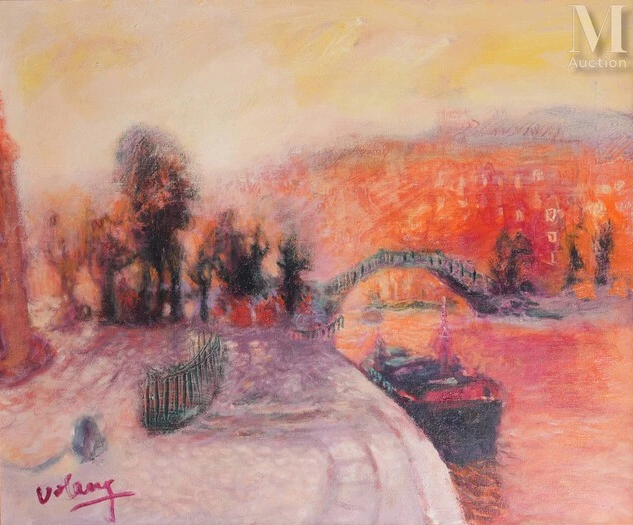The technique of lacquer engraving or Coromandel technique, originating from China and very popular in Europe from the 1690s onwards, especially in the Netherlands, the United Kingdom and France. It is a complex technique that includes these stages: Engraving on the smooth polished surface and then covering the engraved lines with layers of color, silver or gold. Over the next two centuries, the British East India Company imported Chinese engraving lacquer screens to sell in Europe. They were transported by ship, transshipped at a port on the Coromandel peninsula in the Bay of Bengal, on the Southeast coast of India. That’s why Europeans call these engraving lacquer screens “Coromandel wares”.
In Vietnamese art history, Professor Joseph Inguimberty (1896-1971) played a revolutionary role at the Indochina Fine Arts College. The artistic revolution in the use of lacquer in Vietnam began after the establishment of the Indochina Fine Arts College, thanks to the promotion of Joseph Inguimberty, who was amazed at the effect of light reflecting in the lacquer objects found in temples. Therefore, a lacquer workshop was established with the support of artisan Dinh Van Thanh (1898-1977), an important figure who devoted himself to the researches of lacquer art and contributed to its development.

Lot 122. Indochina Fine Arts School, The 20th century
Lacquer engraving screens, 160.5×44.5 cm (each leaf)
This rare screen consists of six leaves, with bird motifs among rocks and flowers on one side, and fan motifs, items and poetry on the other side.
This work was made by students of the Indochina Fine Arts School, inspired by Chinese Coromandel products.


“We rediscovered the Coromandel technique, and in 1938 it was a great success… The technique was then immediately adopted. The first attempt was a disaster. Too large paintings had a completely unsightly effect. Mr. Inguimberty then sent photographs and drawings with the correct color notation from the Musée de Cluny in Paris and made sure they were applied accurately by the students. This is the first success. The art of lacquer engraving Coromandel has been discovered again. From then on, the public began to be interested in the works from the above researches, and those two events gave Indochina lacquer art a huge nudge.” (Excerpt from the book Les maîtres laqueurs de Hanoi, Indochina, February 6, 1941).

Hanoi. École des Beaux Arts. Salle de ventes de la Société Coopérative des artistes indochinois.
© Fonds ASEMI
Archival documents show that an exhibition was held in 1938 in the lobby of the city’s theater, displaying a selection of screens in lacquer engraving Coromandel technique. The works in this exhibition were later selected to participate at the Golden Gate Fair in San Francisco in 1940. Many works then continued to be produced and displayed by the “Indochina Artists Association”. “French Indochina is proud to participate in the largest-scale Fair in San Francisco and to be able to evoke in the eyes of all peoples approaching it the vitality of the present, the precious treasure of history with its splendor. As a happy country, Indochina hopes that the light of the Golden Gate will shine like a rainbow to cross the sea to carry far and wide the message of friendship of the great American democracy to all countries that desire peace and prosperity.” (Excerpted from Indochina at the Golden Gate International Fair in San Francisco, Bulletin économique de l’Indochine, page 4. Pages 707-714).
THE AUCTION: ARTS OF VIETNAM, DUPLEX PARIS – HANOI
April 20, 2024
Contact: info@millon-vietnam.com







